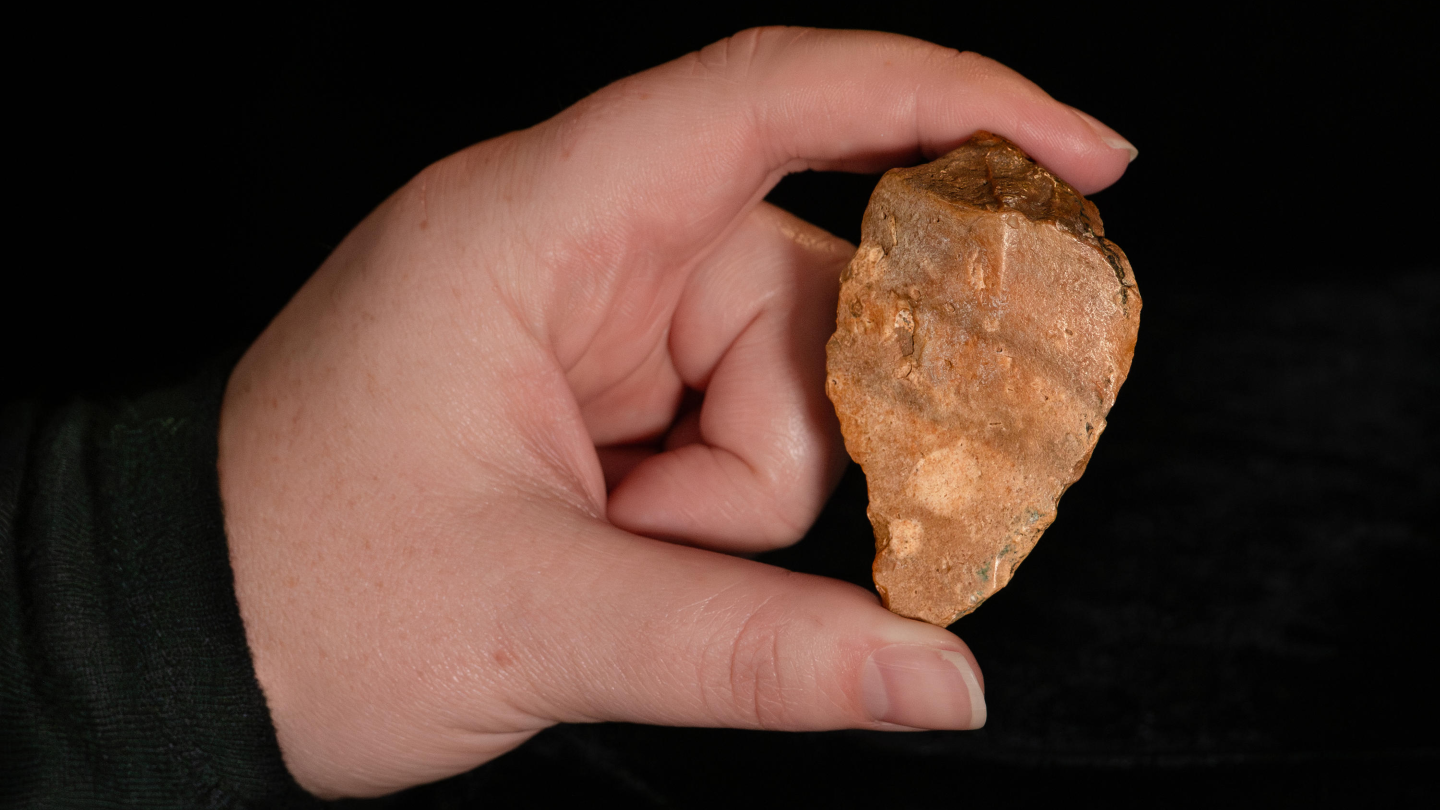1.5 million-year-old stone tools from mystery human relative discovered in Indonesia — they reached the region before our species even existed
A handful of stone tools found on the Indonesian island of Sulawesi has pushed back the date that human relatives arrived in the region.

Stone tools discovered on the Indonesian island of Sulawesi are rewriting what experts thought they knew about human evolution in this region. The tools date to about 1 million to 1.5 million years ago, which suggests that Sulawesi was occupied by an unknown human relative long before our species evolved.
"These are simple, sharp-edged flakes of stone that would have been useful as general-purpose cutting and scraping implements," study co-author Adam Brumm, professor of archaeology at Griffith University in Australia, told Live Science in an email.
In a study published Wednesday (Aug. 6) in the journal Nature, researchers analyzed a set of stone tools that represent the oldest evidence of human relatives in Wallacea, a vast expanse of islands that lie between the Asian and Australian continental shelves.
During excavations between 2019 and 2022, the team discovered seven stone artifacts at Calio, a locality on Sulawesi. The artifacts were made from chert, a hard and fine-grained sedimentary rock, and were created using a percussion flaking technique, where a core rock is struck with a hammer stone to create sharp flake tools. One of the tools was even retouched, which involves trimming the edges of a flake tool to make it sharper.
Using a combination of dating methods, the researchers dated the sediments in which the tools were found to between 1.04 million and 1.48 million years ago. This matches up chronologically with Homo erectus, which reached the Indonesian island of Java around 1.6 million years ago after first evolving in Africa. But Sulawesi does not have as extensive a fossil record as Java.
"So far, the oldest human skeletal element found anywhere on this island [Sulawesi] is a modern human maxilla [upper jaw] fragment that is around 25,000 to 16,000 years old," Brumm said. Sulawesi is also home to the world's oldest narrative cave art, which dates to at least 51,200 years ago. And the oldest stone tool found on Sulawesi, besides the new finds, is about 194,000 years old, the researchers noted in the study.
Get the world’s most fascinating discoveries delivered straight to your inbox.
This new stone tool discovery reveals that human relatives occupied Sulawesi much earlier than previously assumed, likely before they made it to the island of Luzon to the north and the island of Flores to the south. And this means that the mystery group on Sulawesi could be the ancestors of Homo luzonensis or Homo floresiensis, both of which were "hobbit"-size human relatives.
The researchers aren't yet sure which species made the tools.
"Until we have found fossils of archaic hominins on Sulawesi," Brumm said, "it would be premature to assign a hominin species to the tool-makers."
But the most likely scenario, given the date range, is that the tools were made by H. erectus or a species similar to H. floresiensis, Brumm said. "We think the Flores hominins came from Sulawesi originally."
It is also still unclear what the hominins were using the tools for.
"Hominins could have used them for tasks involved in the direct procurement of food," Brumm said, "or to fashion tools from wood or other perishable plant materials." So far, though, none of the animal bones that the team has found have cut marks or other signs of butchery.
Human evolution quiz: What do you know about Homo sapiens?

Kristina Killgrove is a staff writer at Live Science with a focus on archaeology and paleoanthropology news. Her articles have also appeared in venues such as Forbes, Smithsonian, and Mental Floss. Kristina holds a Ph.D. in biological anthropology and an M.A. in classical archaeology from the University of North Carolina, as well as a B.A. in Latin from the University of Virginia, and she was formerly a university professor and researcher. She has received awards from the Society for American Archaeology and the American Anthropological Association for her science writing.
You must confirm your public display name before commenting
Please logout and then login again, you will then be prompted to enter your display name.


